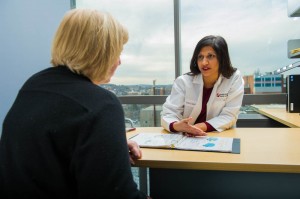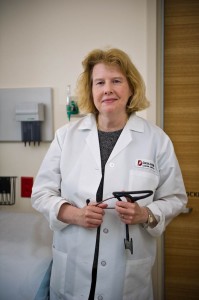When Angelina Jolie underwent a preventative double mastectomy earlier this year, this issue of cancer risk and genetics made front-page headlines. Jolie, who announced the operation in a New York Times op-ed, tested positive for the BRCA1 gene mutation and learned she had an 87 percent risk of developing breast cancer.
Jolie’s announcement left many women wanting to know more: What is a gene mutation? Should I undergo genetic testing? What should I do if my tests are positive?

“Only about 5 to 10 percent of any cancer is hereditary in nature,” says Huma Q. Rana, MD, a cancer geneticist with Dana-Farber’s Cancer Genetics and Prevention Program. “An alteration or a mutation in a gene does not equal cancer, it just means that there is an increased risk or predisposition for types of cancer.”
Rana and Dana-Farber colleague Ursula Matulonis, MD, one of the leaders of the Institute’s Susan F. Smith Center for Women’s Cancers, spoke about genetics and women’s cancers at the July 23, 2013 “What Every Woman Should Know” workshop titled “Outsmart Your Genes: Understanding BRCA1/2 Cancer Risk.”

Rana focused on the genetics behind hereditary breast and ovarian cancer, genetic testing, and reducing cancer risk.
Matulonis, the program leader and medical director for Dana-Farber/Brigham and Women’s Cancer Center’s Gynecologic Oncology Program, spoke on the use of PARP inhibitors in treating ovarian cancer, including updates on current clinical trials.
To view the presentation from Rana, visit Dana-Farber’s Slideshare page.
